"To Bring Memory Back" edition 2006-2007
BIELSK PODLASKI - Zespół Szkół im. Adama Mickiewicza

Who are we
Adam Mickiewicz School Complex
Jewish community in our town
ORLA
As part of our Project, we went for a trip to Orla, along with our teacher, Mrs Anna Niegierewicz. The town is located 10 km from Bielsk Podlaski. During our trip we learned quite much about Jewish community! The first point of our plan was a visit to local synagogue.
The table below says „historical monument” and is located on the synagogue building

The synagogue in Orla was built in the years 70 of the 18th century. In 19th century the building was rebuilt after a fire which destroyed it. The elevation gained then the classical style. In 1928 the Orla synagogue burned down again, but it was quickly rebuilt.
During the World War II the Nazis have devastated the synagogue and used it as a warehouse. After the war the building never regained its proper function and slowly degenerated into a ruin. The exterior was renovated a bit, but the interior remained in the same state, as it was at the end of the war.
Some pictures from the synagogue:
The architecture of the synagogue is a mixture of baroque and renaissance. The building has a defensive character; the entrance is narrow and the windows small. On the front, above the entrance, a Hebrew inscription may be seen, saying: „How dreadful is this place! This is none other than the house of God”. The main prayer room has a rectangle shape. On the eastern wall a sculpted and polychromed niche for Aron Hakodesh is preserved. The sculptures are baroque in style.
Next point of our trip was a visit on a Jewish cemetery
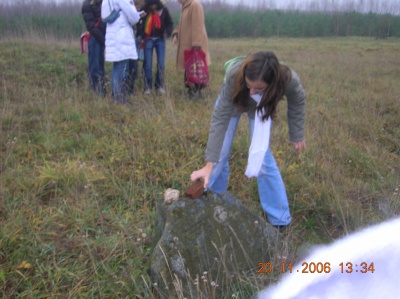
Old Jewish cemetery in Orla was founded in 18h century, near the synagogue in the center of the town. The last burial took place at the beginning of 19th century. During the World War II the cemetery was destroyed by the Nazis. Its area was 0,4 ha. Today nothing is left of the cemetery.
The trip was great, but unfortunately it was time to return ;(
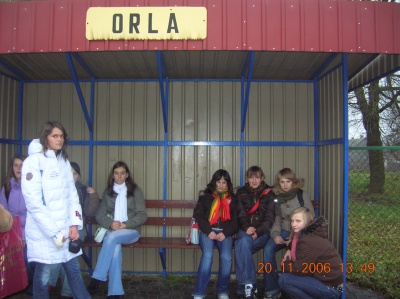
BOĆKI
On February 8th the students of 1st class , along with Mrs Niegierewicz, hale visited the village of Bocki, once inhabited by Jews. The Jewish settlers were relocated here by the Sapieha family in 1568, and 8 years later a Jewish community was created. In 1674 there were 463 tax payers: 54% of them were followers of Eastern Rite, 25% were Catholic, and 21% Jewish. The inhabitants of Bocki were mostly traders, booze sellers, butchers, purse makers and bakers. In 1764 their number was revised and was established at 278 Christian and 54 Jews. At the end of 18th century the population grew to 1513, including 666 Jews. In 1931 Bocki was inhabited by 1158 Catholics, 763 Jews and 421 Eastern Orthodoxes.
The Jewish community included also some smaller settlements in the neighborhood. The last Rabbis of Bocki were Zelig Ruben Bengis and Joachen Mirski. During the World War II the Nazis have burned the synagogues down, and destroyed the antique Torah scrolls from 1768.
There were two Jewish cemeteries in Bocki.
The oldest tombstone on the first of them dated back to 1870. After the World War II two buildings have been built on the cemetery ground, located in the back of the Catholic Church. A little hill remained, with one tombstone on it, together with a shed and a fireplace.
The second cemetery was established at the end of 19th century, or at the beginning of 20th. It is located outside the town limits- to find it one has to drive toward Siemiatycze, and turn right in the center of Bocki. It has an area of 2 ha, but today it is very difficult to find a single trace of it. No tombstone was left, and all that remains is a few concrete fragments of the tombs. The cemetery is completely devastated; signs of plunder of the tombs are clearly visible.
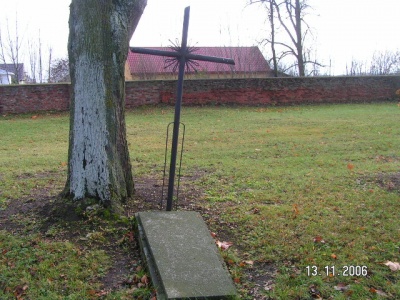
Some tombstones are now a part of the… Catholic cemetery wall. As says the relation of one of the inhabitants of Bocki: „At the beginning of 1943, the inhabitants of Bocki were forced to remove the tombstones on Jewish cemeteries. The matzevot were gathered near the People’s House. They were used, among other, for road repairs and other works. After the war the situation didn’t change much, for the Communist government did not care about the origins of the building material. Thanks to the efforts of a priest named Michał Sokołowski some of the tombstones were preserved by being included in the cemetery wall”.
Those matzevot are still there. Perhaps in the future they will be removed from the wall and placed in the lapidary. Some tombstones may be found in the stone garden in the center of the town, and few of them are in a basement of one of the houses, where they were used for repair works.
THE RUINS OF A MIKVAH
Another relict of the Jewish past of Bocki is a mikvah, built in the first half of 19th century. In the past it was used by both Jews and Catholics, but today the building is in private hands and slowly falls into ruin.
The book of the Jewish community in Bocki
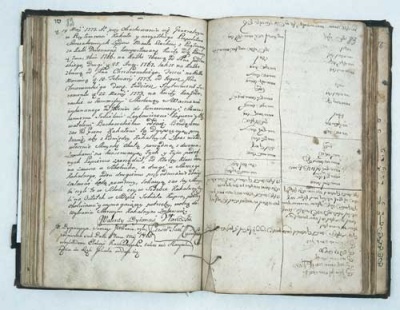
The Pinkas (book) of the Jewish community in Bocki includes election protocols of the community officials, notes concerning synagogue and religion businesses, ritual slaughter, treasury, taxes, juridical and farming problems, and many small notes concerning the life of the community during years 1720-1817.
The Jews inhabited Polish lands since 11th century. Despite temporary crises the Jewish settlements were developing fine, with the support from Polish kings interested in getting specialists in the domains of finances, as well as of some crafts (especially goldsmithing and coinmaking). Since 14th century Jews have started to settle in former Lithuanian and Russian cities devastated by Tatar raids or internal fights. At the beginning Jewish settlements were concentrated on western borders of the Grand Duchy of Lithuania, but as the time passed, they started spreading over the entire territory of Polish-Lithuanian Commonwealth.
During the Commonwealth period Bocki were just a small, private town located in Podlaskie, at the beginning it was part of the Grand Duchy of Lithuania, and later, after the Union of Lublin, in Poland. Bocki belonged first to the Sapieha family, then to Branicki, again to Sapieha and finally to Potocki family, since the sixties of 18th century. The town was located after 1509 by the privilege of the king Sigismund the Old.
First informations of the Jewish settlers in Bocki come from 1577. The Jewish community (kehillah) was there already at the beginning of the 17th century, extending its authority to the small neighboring Jewish settlements. The number of Jews in Bocki was constantly growing despite wars and pests; in 1676 the Jews constituted 13,8% of the population, in the middle of 18th- 30,75% and in 1800- 40%. The Jews were usually working in business and craft. They were butchers, bakers, brewers, and distillers. They worked in textile and leather industry, transport and services (including medics and musicians). Selling booze was one of their most important activities. The commerce involved mostly food and textiles.
The first wooden synagogue was built in the town in 17th century, the new, brick one, was built in 1807. Both were destroyed during the World War II.
The Pinkas is a handwritten book where all the businesses of a kehillah were being noted down. The Pinkas were kept by the authorities of the community, and the notes were in Hebrew (if issued by the community) and in official language (if issued by the owners of the town). The Pinkas from Bocki is one of the few such books which remained till today. The others concern mostly Jewish communities in larger royal towns as Poznan, Plock and Gniezno, which makes the one from Bocki unique and even more important.
BIELSK PODLASKI
On March 12, 2007, along with our history teacher Anna Niegierewicz, we hale visited the Jewish cemetery in Bielsk Podlaski. It was founded in 1807, and before the war it had the area of 3ha, which was systematically reduced and today is not more than a half of its former size.
Some 100 tombstones remained on the cemetery, the oldest one dating back to 1850. The matzevot were made of marble, sandstone and concrete. The inscriptions in Hebrew, Yiddish and Polish were preserved. The cemetery is partially fenced and next to it is a dumping ground.
1. Polish
2. Hebrew
3. Yiddish
Prewar view of the synagogue in Bielsk Podlaski:
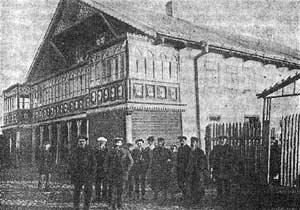
Remains of matzevot;
Different pictures from the cemetery in Bielsk:
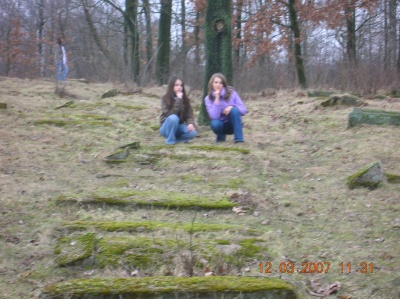
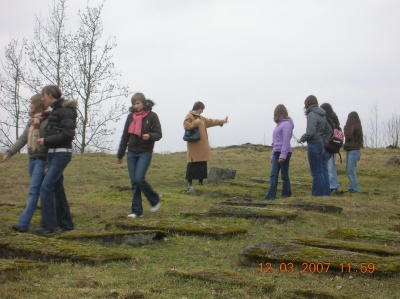
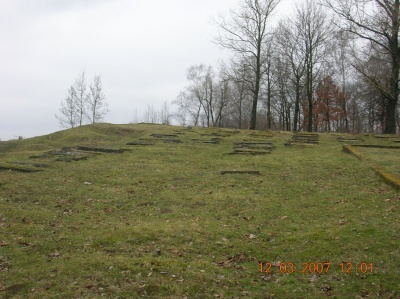
A bit of history:
The fortified town of Bielsk was protecting the trade route to Russia since 12th century. Its purpose was also to defend the borderlands of the northern part of Halych-Volhynian Kingdom. In the first part of 14th century the town was seized by Lithuania and, at the end of century, destroyed by the Knights of the Teutonic Order. In 1440 the town was rebuilt and received the town privileges.
The first mentions of Jews living in Bielsk date back to 1487. They were leasing the customs chamber in Bielsk. In 1542 a synagogue was built. In 1564 the local Jews were accused of a ritual assassination and, during the trial, two manifests were published by the king Sigismund. Finally, all Jews were expelled from the town. In 1569, after the Union of Lublin, Podlaskie became part of the Kingdom of Poland. In 1655 Bielsk Podlaski was destroyed by Swedish army. Since 1795, after the partitions of Poland, the town was in the part annexed by Prussia. Since 1802 Jews became settling again in the town. They were subordinated to the Jewish community in Orla.
During the World War I most inhabitants flew the town in fear of the upcoming front.
In the between the wars period, in 1921, Bielsk was home for 2.392 Jews, 49% of the entire population.
During the World War II, in September 1939, Bielsk was occupied shortly by the Germans. Soon after, as a result of the Molotov-Ribbentrop pact, the town found itself in Russian occupied zone, only to be regained by the Germans in June 1941. At the end of 1941 the Nazis opened a ghetto in Bielsk, where some 5000 Jews were imprisoned. The ghetto was liquidated in 1942; about 200 old and sick Jews were shot on place, the others were moved to the extermination camp in Treblinka.
The vicinities of Bielsko was an area of operations of Polish and Russian partisans. The town itself was liberated by the Russian army in 1944. During the operation 70% of the town structures were destroyed.
Meeting with a historian, Mr. Zbigniew RomaniukOn March 17th, 2007, our librarian, Mrs Grazyna Korolczuk, organized a meeting with a regional historian, Mr Zbigniew Romaniuk. The subject was the history of the Jews of Bielsk since the beginning to the Holocaust. We were amazed by the huge knowledge of our guest and by his workshop, by which we mean his ways of getting information- we couldn’t find too much of it…
Mr Romaniuk presented us books in which we might seek information on subjects which interest us, he also told us of people in our region who were awarded with title “Righteous Among the Nations”. After the lecture we stayed for a while to satisfy our curiosity- we had so many questions that we exceeded the planned time of our meeting. We are planning to keep in contact with Mr Romaniuk!
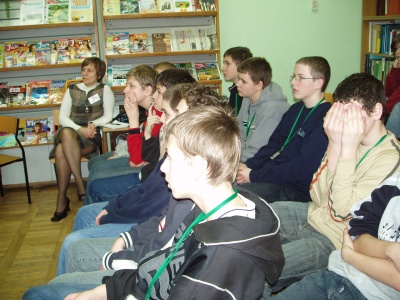
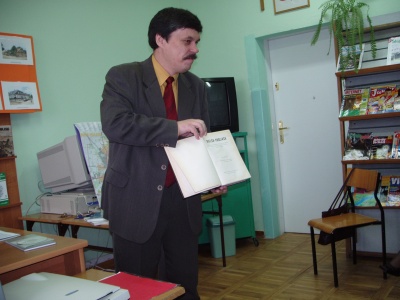
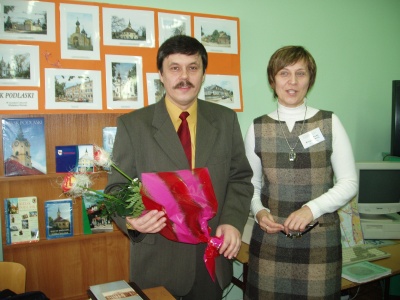
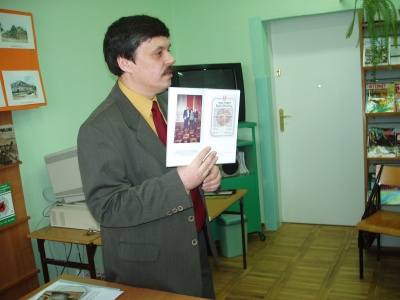
What we do in the project
- Search for informations about the places related to the Jewish culture in and near our town;
- Prepare a tourist bike trail connecting local places of memory;
- Clean up the Jewish cemetery in our town;
- Join forces with local museum and have lessons on Jewish history and culture;
- Create a memory book containing the list of places where local Jews have lived;





